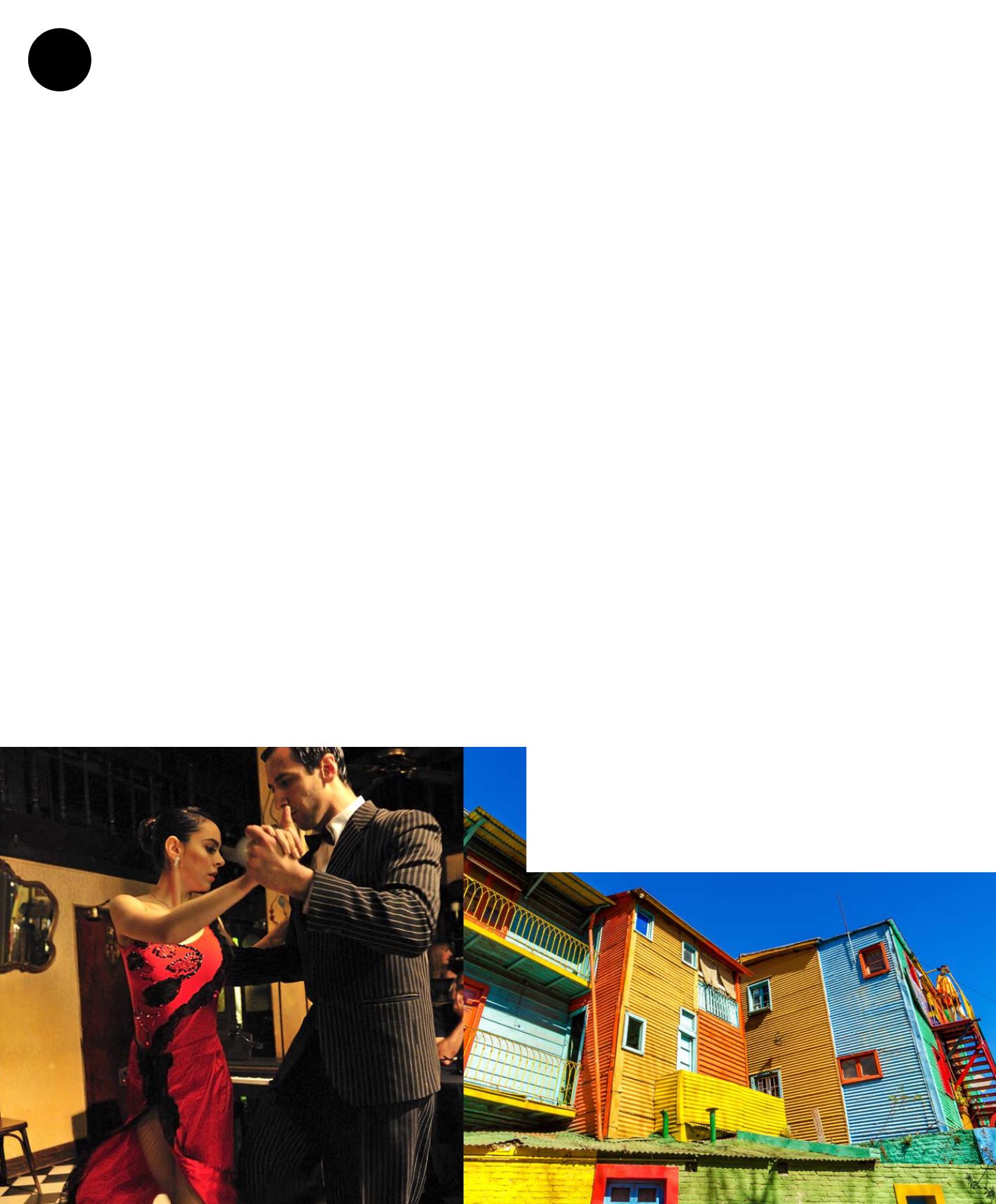
18
THE AFFLUENT TRAVELER
|
Feature Story
ornate final resting place of Evita (Eva Perón). I’m
sure she’s not resting — I bet she’s doing the tango
down there.
Argentina’s Patagonia
There’s no tango in Patagonia, the 648,000-square-
mile southern-most cone between Chile and
Argentina. This is a land of glaciated mountains,
jagged granite peaks, massive glaciers, and fragrant
forests. Patagonia is all about light — the way the
sun hits the ochre-colored rocks, dapples through
the beech trees onto the forest floor and turns the
snow-covered mountains into glistening ice palaces.
In summer (our winter), the days stretch out until
after 9 p.m., and then stars as big as cluster bombs
light up the sky.
No matter where you are in Patagonia National
Park — whether climbing muddy inclines to get a
better view of 11,171-foot-high Fitzroy and Cerro
Torre or gazing into the distance at a gaucho on
motorcycle rounding up his horses, you need your
camera ready. You don’t want to miss the shot of a
condor with a ten-foot wingspan soaring above or the
turkey-sized ibises foraging on the ground or watch a
huge herd of guanacos (similar to llamas) approach so
close you can see their fur blowing.
Patagonia must have the strongest wind on
Earth with blasts so ferocious you need to crouch to
prevent being knocked over. Just as constant as the
wind are the views. One day I hiked from the trailhead
at El Chaltén (the trekking capital of Argentina) up to
views of the jagged, snow covered Fitz Roy Massif, an
8,500 square-mile UNESCO World Heritage Site and
the largest continental ice expanse after Antarctica.
Tango in Buenos Aires
I’d pre-booked a tango lesson for my arrival in Buenos
Aires, but my flight was delayed and I arrived too late
for the lesson. Instead, I decided to watch tango at
Esquina Carlos Gardel, one of Buenos Aires’ more
popular tango dinner shows and where I expected to
see plenty of porteños (locals); but there were none
because the locals go to milongas (tango halls), which
don’t start much before midnight and go till dawn.
I took a seat at the milonga and watched the men
circling the women like prey. A man doesn’t ask a
woman to dance — he makes eye contact. The woman
either chooses him by her look or averts her eyes
meaning “no.” The man returns to her table again and
again, hoping to be chosen. It’s a classic courtship
ritual. Couples twirled counterclockwise around the
room, their legs and bodies intertwining. It was the
most sensual and sultry dance I’d ever seen.
Tango is everywhere in Buenos Aires, even on the
streets. The La Boca district near San Telmo (a great
neighborhood with cobblestone streets and cute
boutique-y shops) is home to the pedestrian-only
street, the Caminito. Even though touristy, I loved
watching couples tango in front of the outdoor cafes.
Probably the only place I didn’t see tango was at the
famous Recoleta Cemetery, which is enormous and
like a real city with tree-lined streets; but instead of
apartments, there are 4,691 mausoleums including the
Feature Story
FEA
d
On any night
in Buenos Aires
you can find a
milonga filled
with people
sitting around
the dance
floor, drinking
wine, dancing
and people
watching.


